On my trip this month to Rome, I ended up visiting Tivoli, a town in central Italy, which offers stunning views of Italian countryside, and spanning out across the Roman Campagna. A city born over 400 years before Rome, going to Tivoli is like stepping back in time, in a way dissimilar to more densely populated areas of the country. For a tourist spot, it has almost a lazy, sleepy feel to it’s back streets. Perhaps its all the green landscape, beautiful river and cascading falls that give this impression.
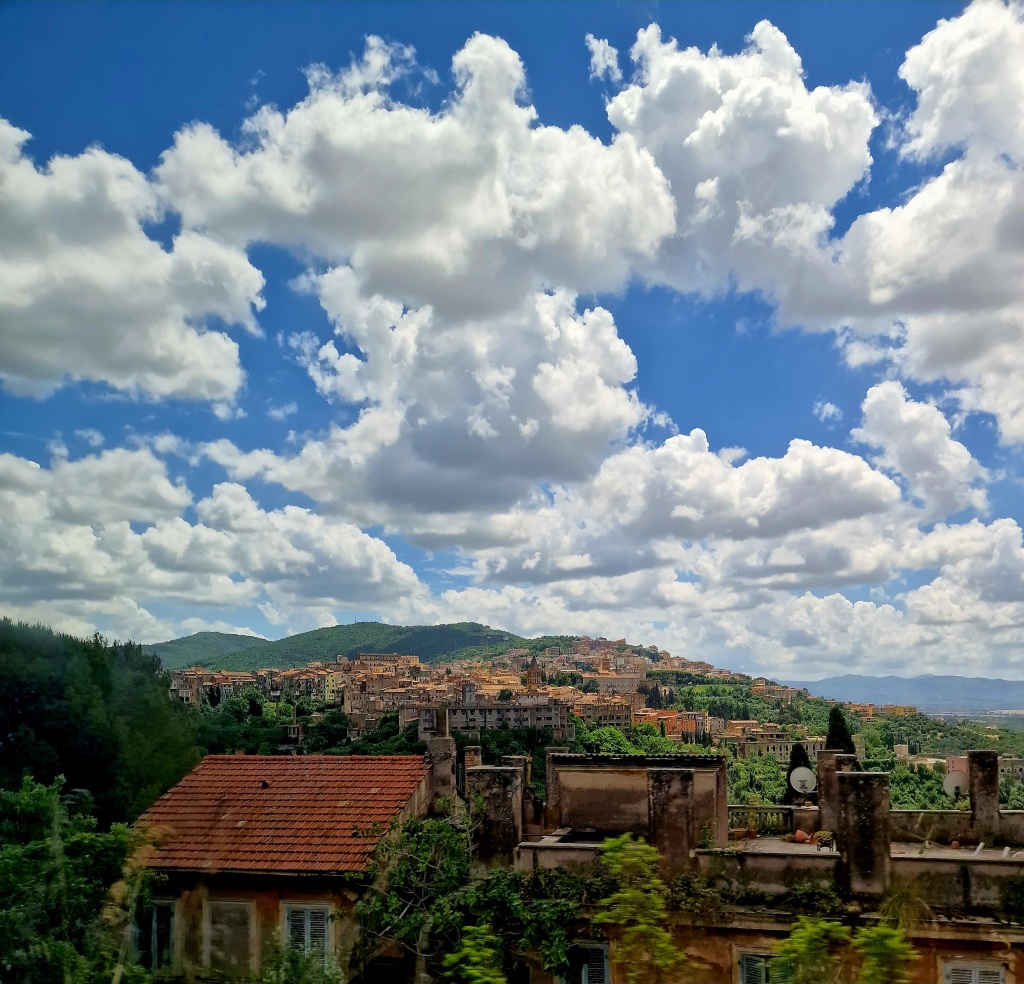
Tivoli boasts many historic sites;
Santuario di Ercole Vincitore – a temple and theatre complex dedicated to the hero and demigod Hercules.
Basilica of San Lorenzo, and the Church of Santa Maria Maggiore.
Rocca Pia, a 15th century fortress built by Pope Pius II.
And then possibly most famously it holds not one but two World Heritage Sites; Hadrians Villa, and the one we were there to visit Villa D’Este and it’s gardens.
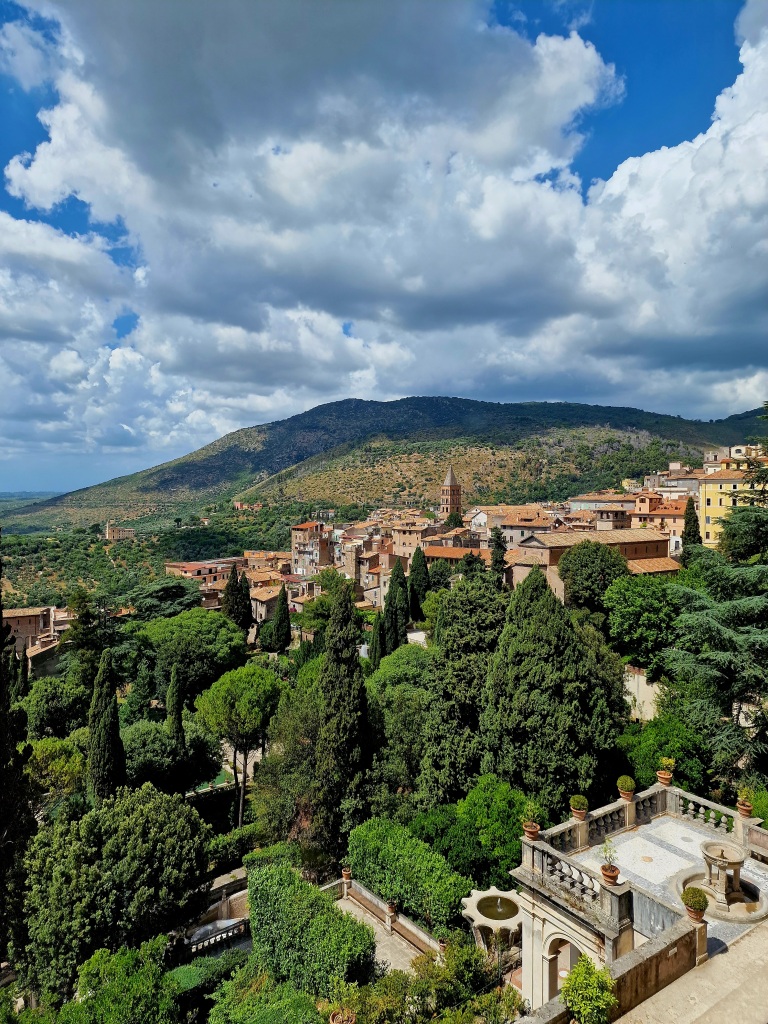
Villa D’Este is one of the most comprehensive illustrations of Renaissance Culture at it’s most refined. The palace and gardens were commissioned at the request of Cardinal Ippolito II d’Este of Ferrara. (The Este family had been lords of Ferrara since 1393, and were famous as patrons of the arts and of the humanist scholars of the Renaissance.)
Internal painting and design work at the villa began in roughly 1563, and even earlier than that starting in 1560, the massive undertaking of excavating the landscape and reflowing water from the river, for all the fountains began. It took a long time to complete, not just because of the sheer size and scale of the work, but also because of the high maintenance costs, and the cardinals fluxuating income at the time.
But eventually we ended up with this magnificent piece of landscaping that we have before us today. It has of course been added too over the years; the ever present Bernini, even made an addition in the 17th century, in the form of the design for the Fontana del Bicchierone.
Once you enter the Villa through a very quaint courtyard, full of lemon and orange trees, and a beautiful little water feature, you are able to witness the remaining paintwork throughout the rooms. Such vibrant colours, and clever details.
No space is wasted, and there is always too much to view all at once.
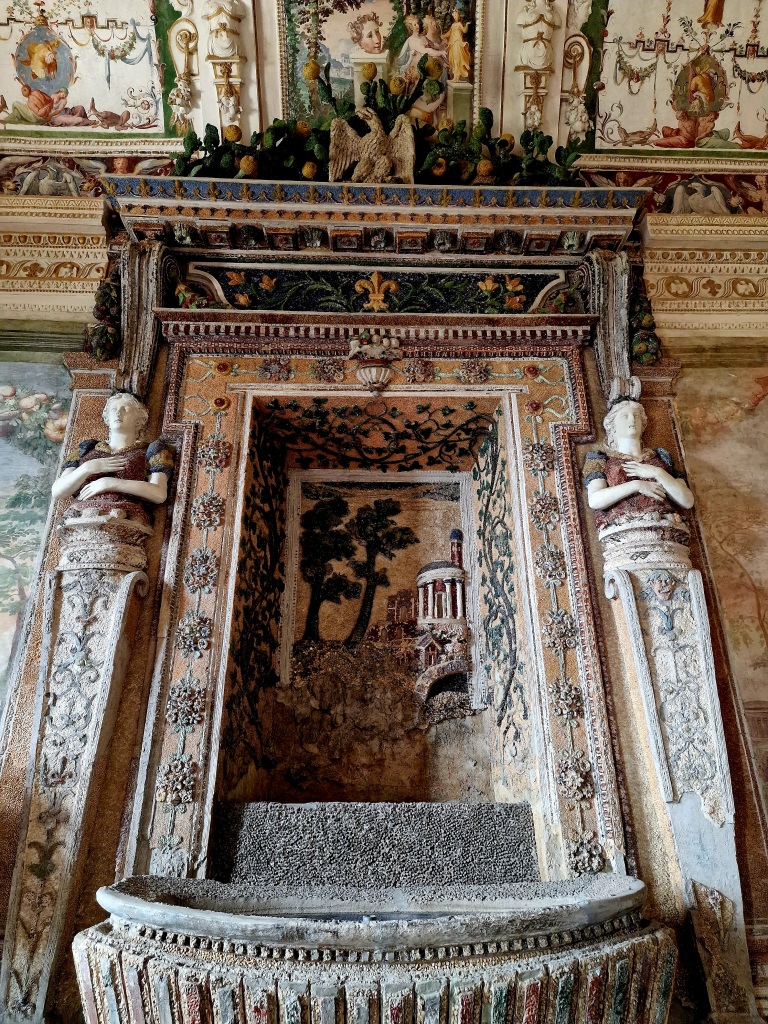
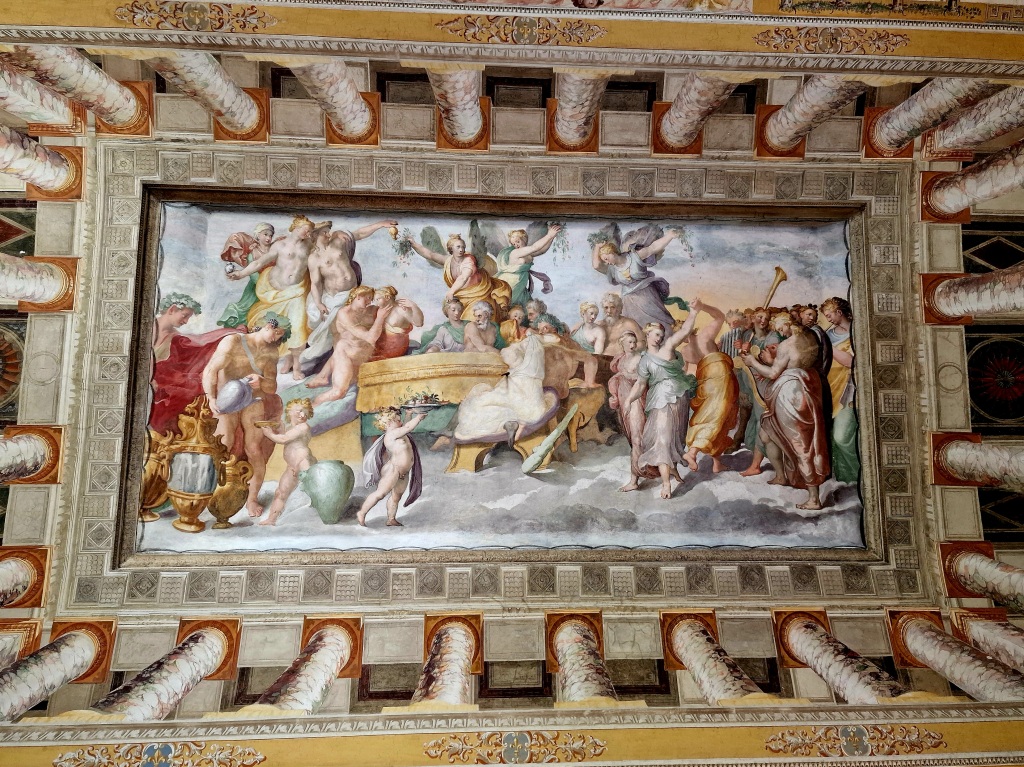
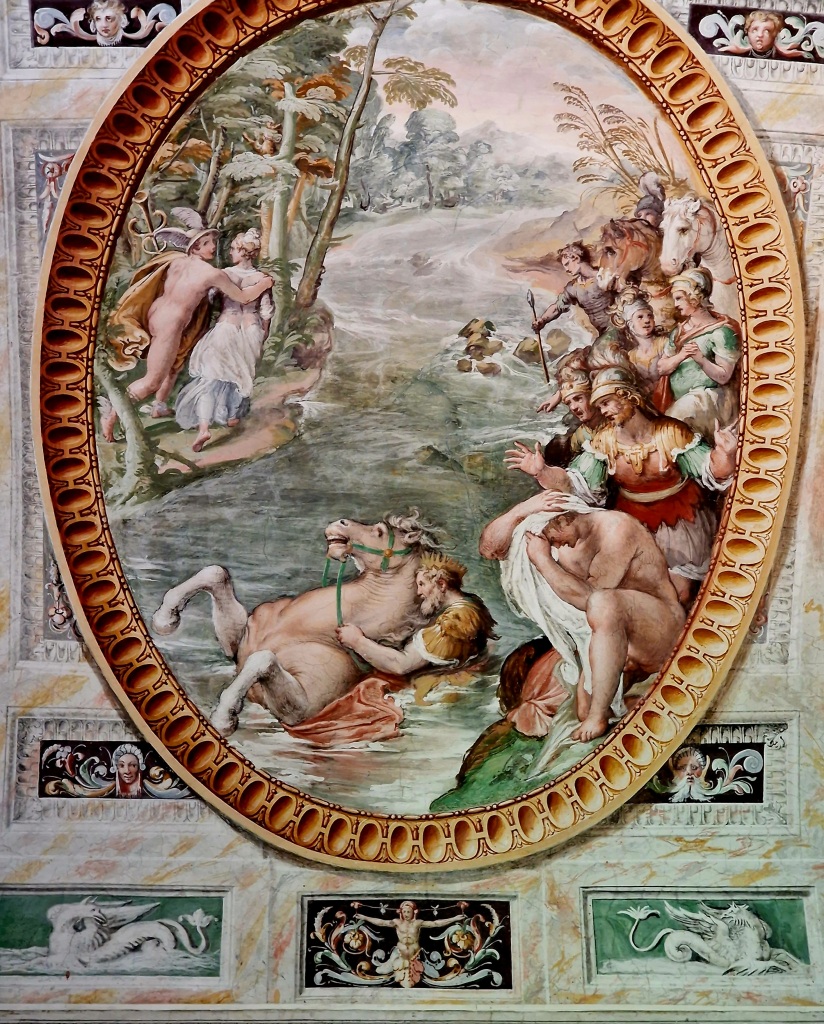
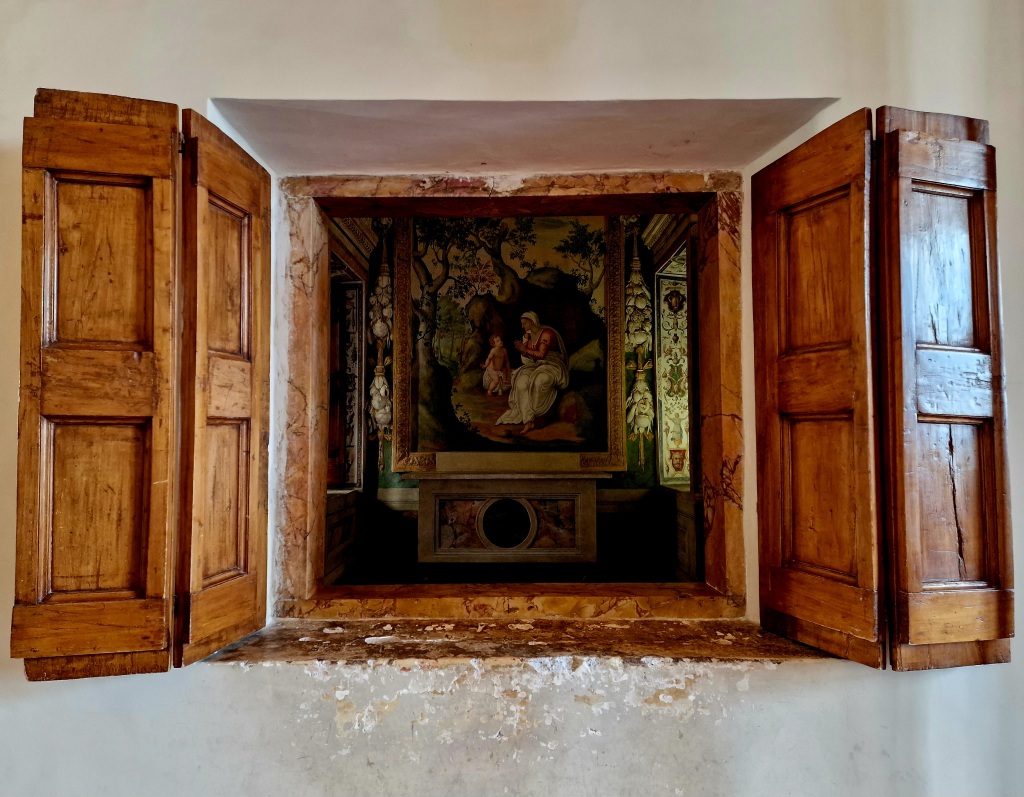
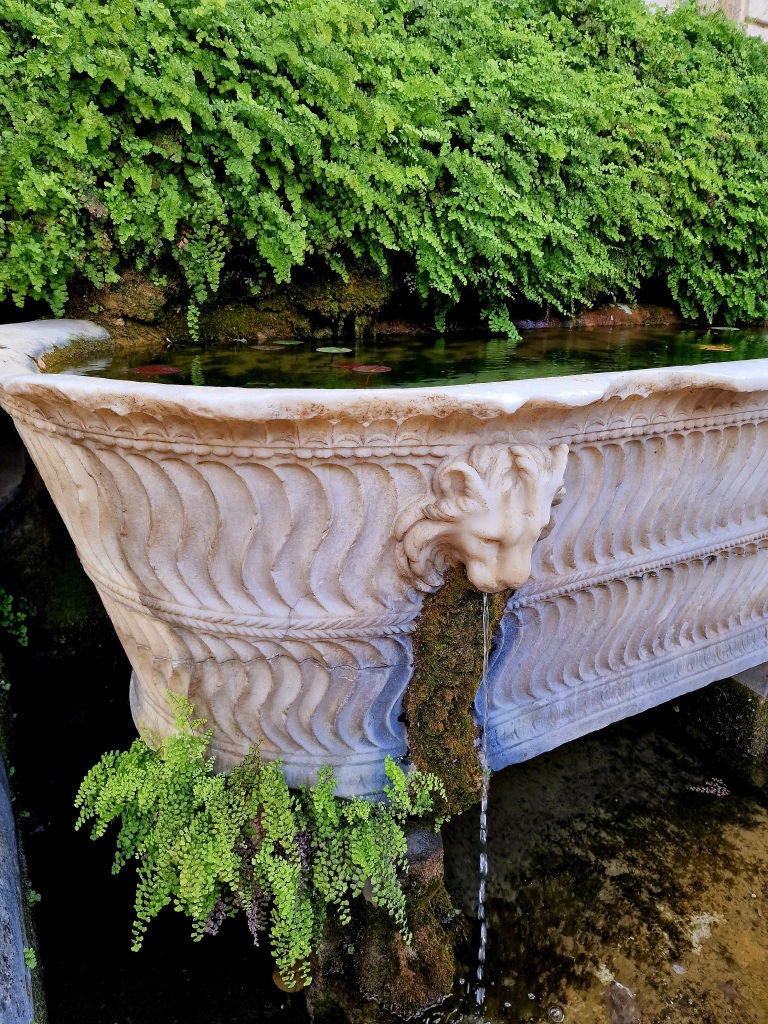
It is also from the Villas expansive windows that we get our first glimpses of the incredible view beyond. The almost panoramic view of Rome and the countryside beyond. With the vast space of the rooms, the tall shuttered windows, it was very hard not to feel like you had walked into an estate romance novel, a feeling I had that would only be amplified when I saw the sheer magnitude of the water features outside.
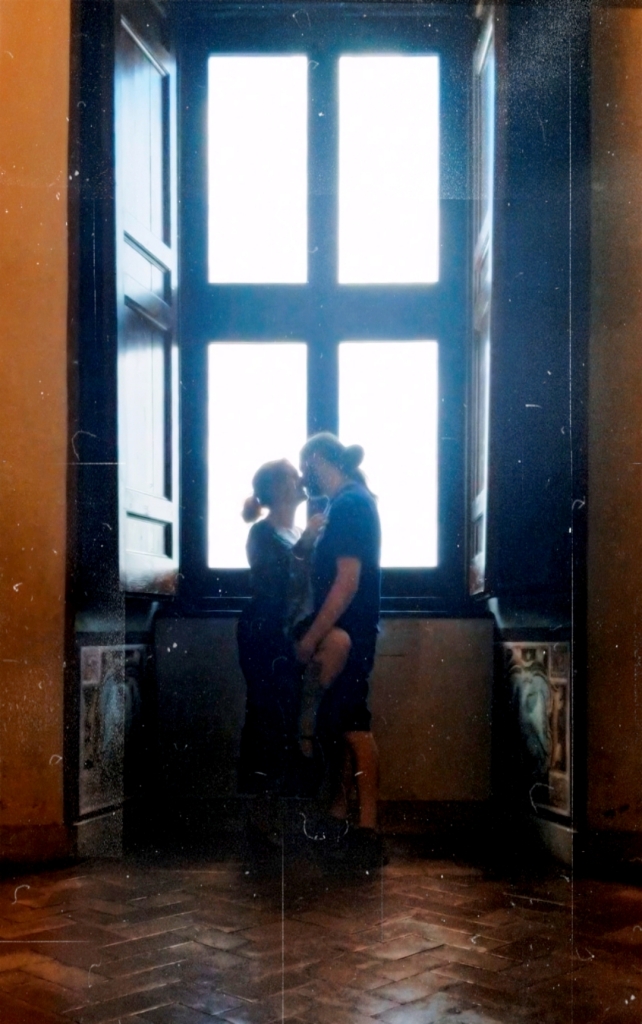
And…once you have worked your way through the beautiful painted rooms, you get your first glimpses of the garden as you step outside. From this vantage point, you only get little glimpses of the magic that awaits you below, as the sloping gardens descend away from you. Fifty-one fountains and nymphaeums, 398 spouts, 364 water jets, 64 waterfalls, and 220 basins, fed by 875 metres of canals, channels and cascades, and all working entirely by the force of gravity, without pumps.
I won’t go into too much detail about the original fountains, as alot of the fun is in finding them yourself as you stroll under the italian sun, which up in the gardens isn’t so abrasive, when combined with the mountain winds.
Even with the map supplied to you, whilst looking up notes for this blog post, I found that we managed to miss some fountains. Oops!

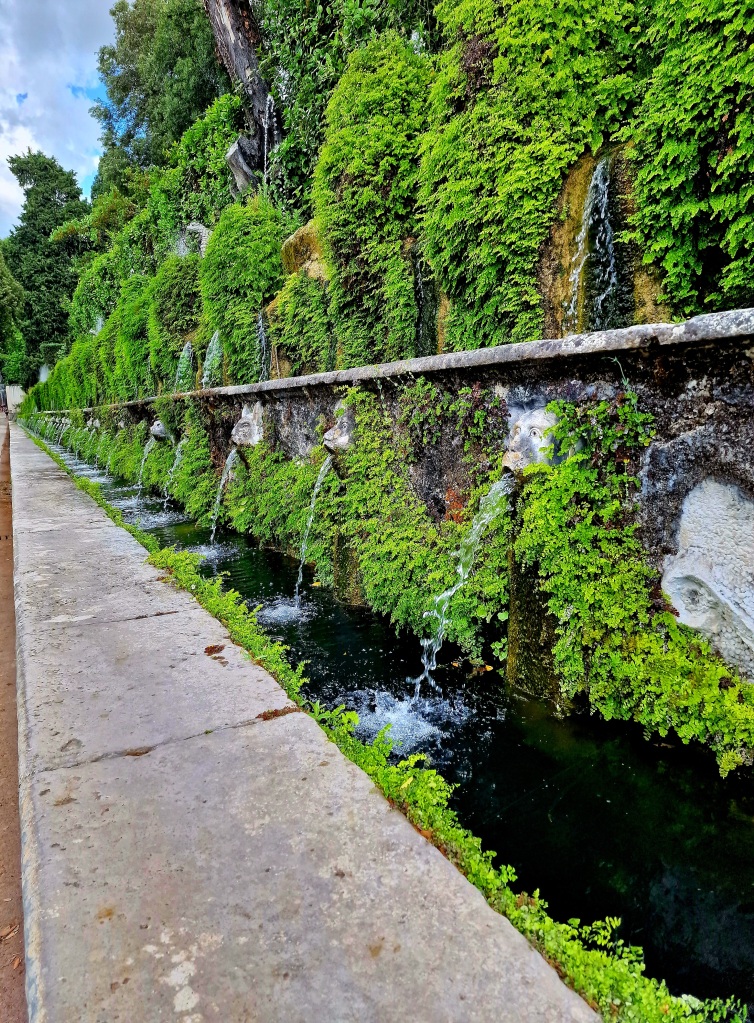
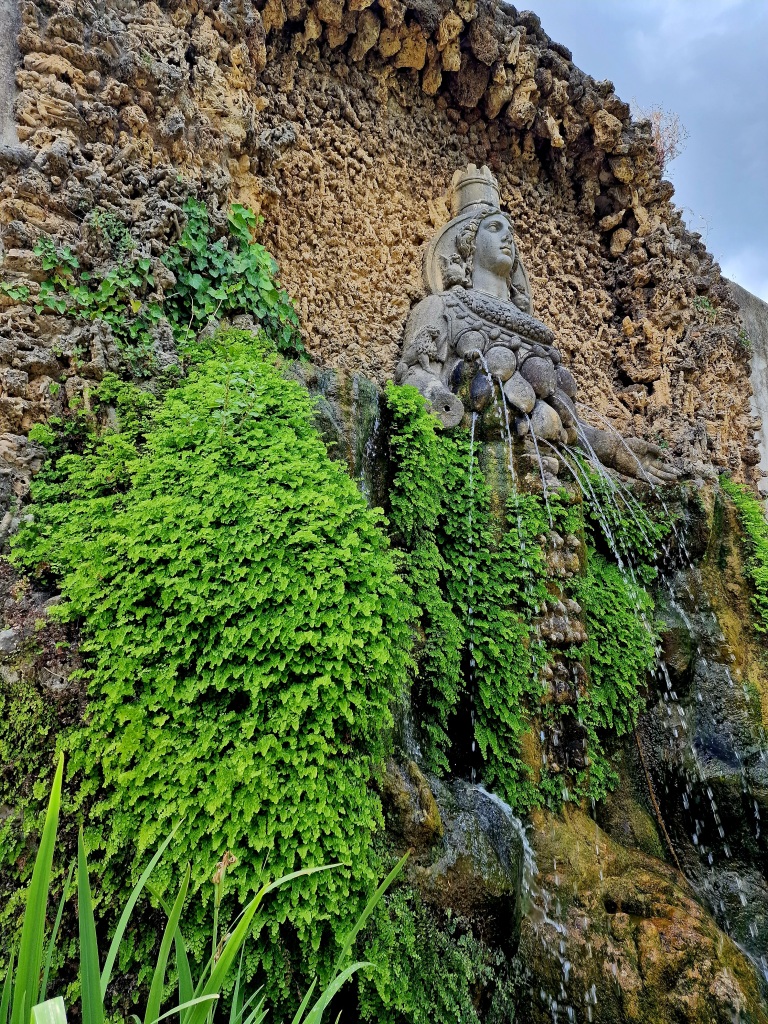

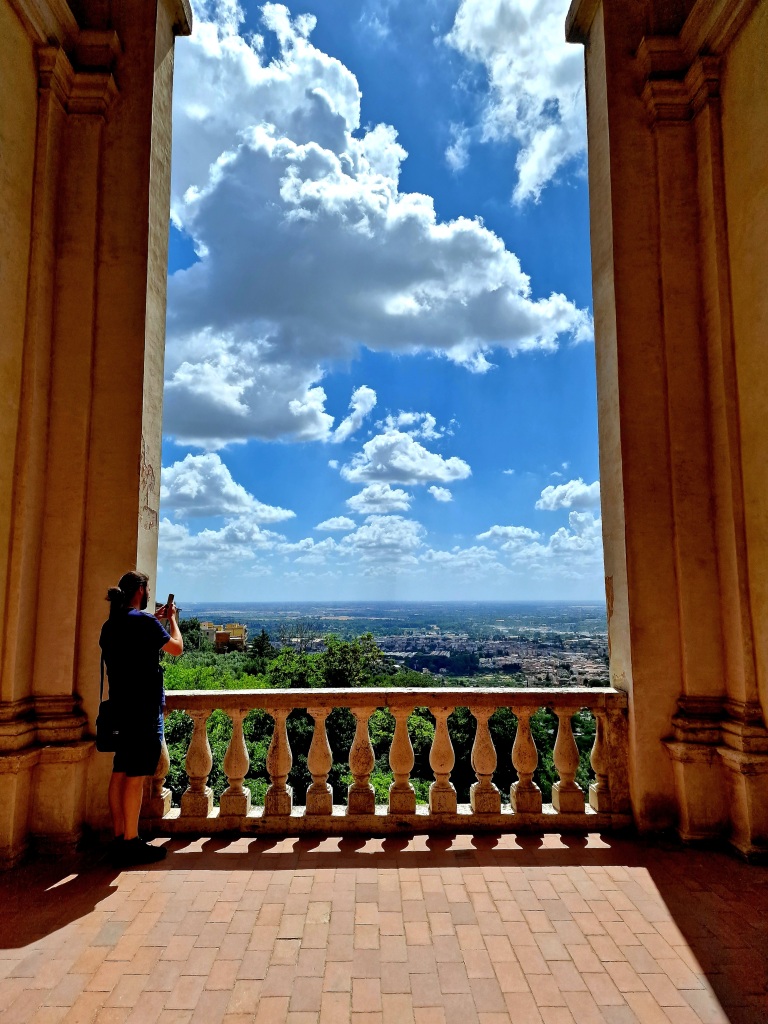
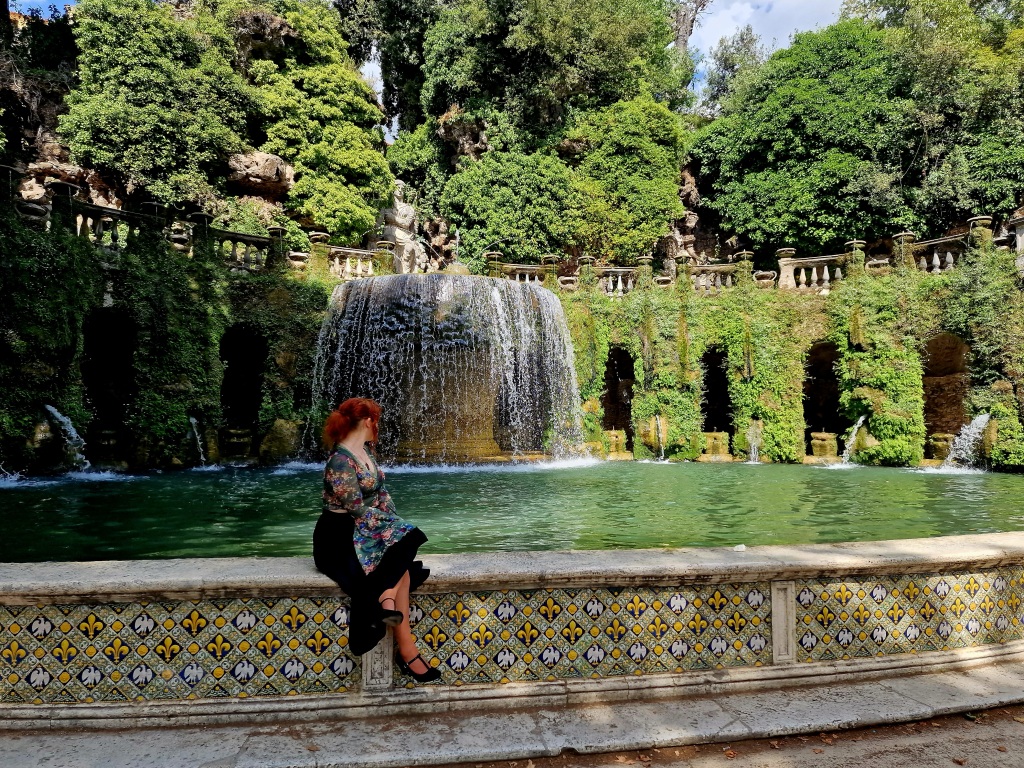
Overall, it was a beautiful day out, exploring this magnificent space. And even with it being one of the tourist hot spots for people taking day trips out of Rome, it never felt too crowded whilst we were there (June) – and because of how centralized the gardens seem to be, when you leave the Villa there are plenty of places to grab a light lunch, or an evening meal depending on what time you visit.
(I will say as a side note; that whilst stepping back in time had many advantages, the cafes and restraunts we looked at were not very good for a Vegan diet. Plenty of gluten-free options strangely, but many of the staff didn’t even know what vegan meant. So this is worth noting to maybe stock up on some delicious snacks to take with you, or to not have too high expectations for anything other than Pasta Pomodoro.)
—————————————————————–
Because I am a lover of how things in the world align sometimes, I thought I would also share that my chosen read for this holiday was a book called ‘The Cloisters’ by Katy Hays. This was a delicious academia mystery, steeped in Italian history, specifically involving divination during the Renaissance. And unbeknown to me, a major focal point in this book would be a deck of Tarot Cards owned by the Este family!
Whilst obviously some liberties have been taken with this work of fiction these cards do in fact exist, at least in part.

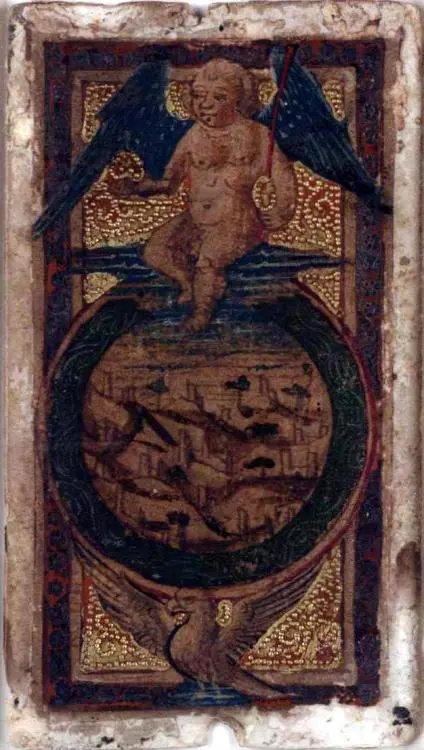
Although they are less well known than the famous Visconti Tarot cards, these Este Tarot cards are one of the earliest extant tarot decks found to date. Although…calling it a deck, is a little bold of a claim, as sadly only 16 major arcana cards, and 1 minor arcana card, still survive today.
This deck features heraldic emblems of Ercole I d’Este and his wife, Leonora of Aragon. It is believed that this deck was possibly made as a wedding gift for the couple.
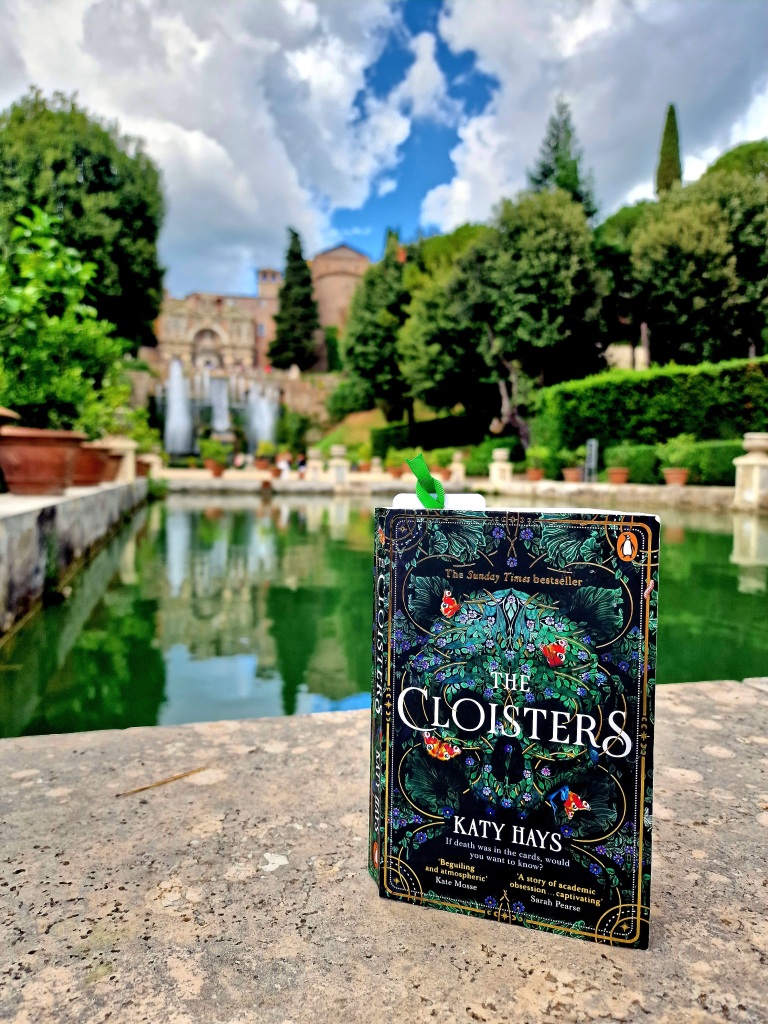
It was a fascinating read, and I haven’t been shocked by a book in this way for a long time. I felt a bit like a gothic Agatha Christie by the end! So definitely give this a read if the origins of occult tarot, academia, and Italian history are of interest to you, I cant recommend it enough.
And if you get the chance to read it somewhere as pretty as this….then that’s even better.